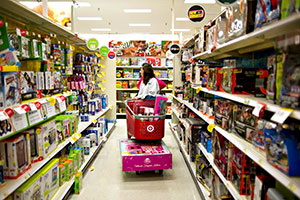Core US Consumer Prices Increase More Than Forecast Again

Consumer prices in the United States excluding food and fuel climbed more than forecast in February for a second month, adding to signs inflation is moving closer to the Federal Reserve’s target. The overall cost of living fell amid cheaper fuel.
The so-called core measure, which strips out volatile food and fuel, rose 0.3% from a month earlier, the same as in January, figures from the Labor Department showed March 16 in Washington. The overall consumer-price index declined 0.2%, matching the median forecast of economists surveyed by Bloomberg News.
Price pressures are starting to stir more broadly after plunging fuel costs and the stronger dollar kept inflation subdued through 2015. Fed policymakers, who have called those drags transitory, are meeting to consider when to raise the benchmark interest rate further after lifting it in December for the first time since 2006.
“There are signs that inflation pressures are beginning to build up,” Emanuella Enenajor, an economist at Bank of America Corp. in New York, said before the report. “We need to see the gains continue. The outlook on inflation is improving. In a year or two, we’ll see inflation reach the Fed’s goal.”
Bloomberg survey estimates for the consumer price index ranged from a decline of 0.5% to a gain of 0.3%.
Another report March 16 showed housing starts climbed more than forecast in February, led by the strongest single-family building in more than eight years. Figures from the Commerce Department showed work began on 1.18 million homes at an annualized rate last month, up 5.2% from January.
The consumer price gauge increased 1% in the 12 months ended in February, after a 1.4% year-over-year advance the prior month.
The core CPI measure, which excludes volatile food and fuel costs, rose 2.3% from February 2015, the most since May 2012, after rising 2.2% in the prior 12-month period.
The median projection in the Bloomberg survey called for the core gauge to rise 0.2% from the previous month.
Energy costs decreased 6% from a month earlier, the report showed. Food prices rose 0.2%.
The increase in the core measure was broad-based, reflecting gains in rents, hotel rates, clothing, medical care, cars and education. The 1.6% jump in apparel prices last month was the biggest in seven years.
Higher prices for shelter, including rents and hotel rates, have been helping to put a floor under inflation even as cheaper energy bills and the strong dollar exert downward pressure.
The Fed’s preferred gauge of inflation, which is the Commerce Department’s personal consumption expenditures measure, hasn’t matched the central bank’s 2% goal since April 2012.
Recent data showed some promising signs. The prices of goods and services consumers buy, excluding food and fuel, rose 0.3% in January from December, the biggest gain since 2012, according to figures from the Commerce Department released on Feb. 26. That pushed costs up 1.7% over the past 12 months, already exceeding the 1.6% that Fed officials forecast for the fourth quarter of 2016.
Policymakers, who are scheduled to issue a statement later on Wednesday, have said they plan to raise interest rates only gradually. Economists project the Fed will leave the target range for the federal funds rate unchanged at 0.25% to 0.5%. Along with new rate projections, officials will publish updated forecasts for growth, inflation and unemployment.
The CPI is the broadest of three price gauges from the Labor Department because it includes all goods and services. About 60% of the index covers prices consumers pay for services from medical visits to airline fares, movie tickets and rents.
Wholesale prices declined 0.2% in February and were little changed over the past 12 months, data showed on March 15.
The low overall cost of living is helping buoy paychecks, a separate report from the Labor Department showed March 16. Hourly earnings adjusted for inflation were up 1.2% over the past 12 months.



